About this ransomware
If you cannot open your files and they suddenly have .CYBERRESEARCHER attached to them, you are dealing with Cyberresearcher Virus. It’s a ransomware type of malware that takes files for hostage and demands that users pay various sums of money in order to get the files back. 
Generally, ransomware ask for somewhat realistic sums of money, ranging from $50 to a $200, but this particular ransomware asks for 2.5 Bitcoin, which are currently worth around $25 000. We doubt we need to say you should not pay the crooks anything. Even if the sum was much smaller, it would still not be recommended to pay because it would not be that shocking if criminals just took the money and gave nothing in return. They aren’t going to feel bad for fooling you, and it would be naive to think otherwise. You will just end up spending money for nothing. Instead, you should invest some of that money into a backup option so that you would not be risking losing your files again. If you recall making backup, you just need to delete Cyberresearcher Virus, and can then proceed to file recovery.
It’s very likely you obtained the ransomware by opening an infected spam email or by downloads from unreliable sites, thus you need to familiarize yourself with how to avoid ransomware.
How does ransomware spread?
Ransomware is generally added to emails as an attachment and if you open it, the ransomware will launch. These attachments are why you need to be careful when it comes to emails, and vigilantly review them before opening. It’s recommended to scan the attachments with scanners, such as VirusTotal. It’s also recommended to check the sender. If they claim to be from some legitimate company, make sure the sender’s email address matches the company’s. Check the contents and look for strong pressure to open the attachment. The email could claim it’s some kind of receipt or an urgent document, anything that would convince you to open it without much thinking. Another thing to note is that generally, malicious emails would not use your name as they do not know it. Therefore, if they were pretending to be eBay when emailing you, they would use greetings like Dear Customer, Member or User. If you are an eBay user, when the legitimate company emails you, they will include the name you have given them.
Another ransomware spread method is via questionable download sources. Torrents are particularly often the cause of an infection, so if you must download via them, at least make sure what you’re downloading won’t give you malware. Downloading via pop-ups and other kind of ads could also lead to malware, so whenever you are in need of a program or an update, use official websites. Never ads.
What does it do?
When ransomware launches, it immediately start encrypting files. All affected ones will have a .CYBERRESEARCHER file extension added. When you notice that you cannot open your files, you will find a ransom note that will just say that your files have been encrypted and ask you to transfer 2.5 Bitcoin to the provided wallet. One thing is noticeably absent from the note. An email address to contact crooks with. Generally, when victims are asked to pay to a wallet, they are given an email address to which the payment confirmation is sent. Because you are not given any kind of personalized ID or any way to contact the crooks, they will not know it was you who transferred the money. Thus, whether you pay or not, the outcome is the same, crooks will not help you recover files. Asking for $25 000 is rather bold, and seeing that they don’t even try to pretend that they will recover your files, it can be believed that this ransomware is actually a wiper, malware aiming to erase files.
In any case, paying the ransom is not an option as there is no way you will get a decryption tool. You should buy backup instead, and start backing up all your important files so that if this situation was to reoccur, you would not lose your data. In the meantime, you need to remove Cyberresearcher Virus from your computer.
Cyberresearcher Virus removal
You will need to obtain anti-malware software to safely uninstall Cyberresearcher Virus from your computer. If you attempt manual elimination, you could end up damaging your computer further. However, do keep in mind that files will not be recovered just because you erase the infection from your computer.
Offers
Download Removal Toolto scan for Cyberresearcher VirusUse our recommended removal tool to scan for Cyberresearcher Virus. Trial version of provides detection of computer threats like Cyberresearcher Virus and assists in its removal for FREE. You can delete detected registry entries, files and processes yourself or purchase a full version.
More information about SpyWarrior and Uninstall Instructions. Please review SpyWarrior EULA and Privacy Policy. SpyWarrior scanner is free. If it detects a malware, purchase its full version to remove it.

WiperSoft Review Details WiperSoft (www.wipersoft.com) is a security tool that provides real-time security from potential threats. Nowadays, many users tend to download free software from the Intern ...
Download|more


Is MacKeeper a virus? MacKeeper is not a virus, nor is it a scam. While there are various opinions about the program on the Internet, a lot of the people who so notoriously hate the program have neve ...
Download|more


While the creators of MalwareBytes anti-malware have not been in this business for long time, they make up for it with their enthusiastic approach. Statistic from such websites like CNET shows that th ...
Download|more
Quick Menu
Step 1. Delete Cyberresearcher Virus using Safe Mode with Networking.
Remove Cyberresearcher Virus from Windows 7/Windows Vista/Windows XP
- Click on Start and select Shutdown.
- Choose Restart and click OK.

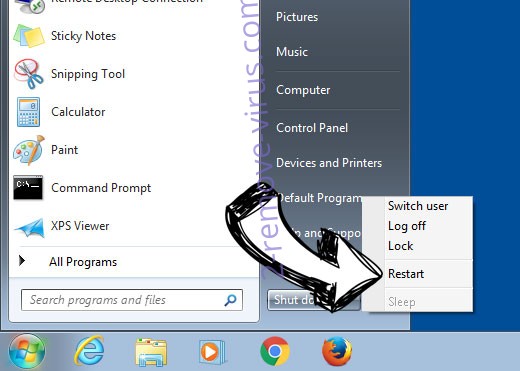
- Start tapping F8 when your PC starts loading.
- Under Advanced Boot Options, choose Safe Mode with Networking.

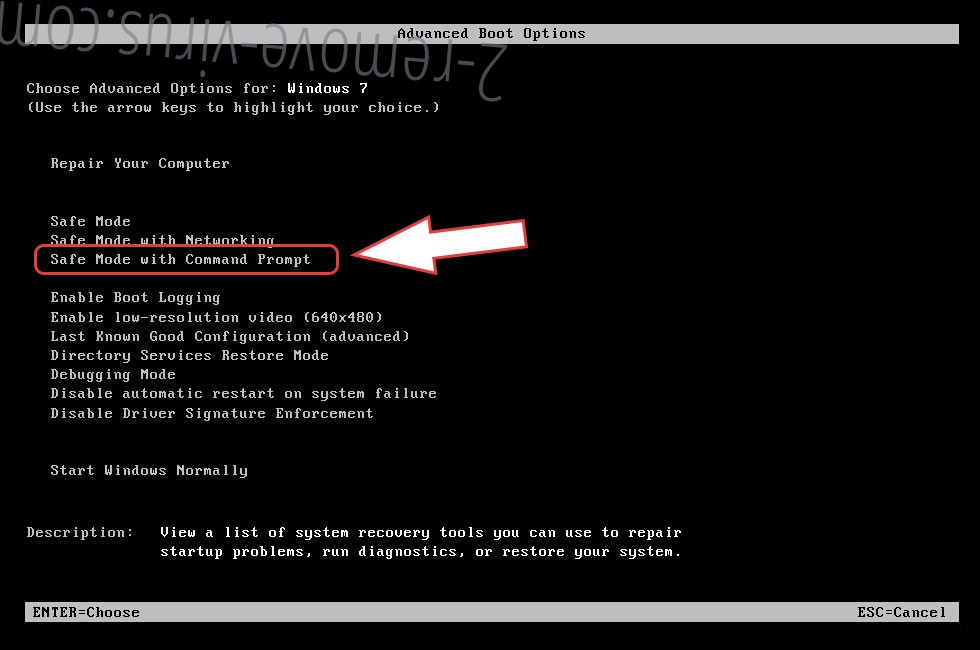
- Open your browser and download the anti-malware utility.
- Use the utility to remove Cyberresearcher Virus
Remove Cyberresearcher Virus from Windows 8/Windows 10
- On the Windows login screen, press the Power button.
- Tap and hold Shift and select Restart.


- Go to Troubleshoot → Advanced options → Start Settings.
- Choose Enable Safe Mode or Safe Mode with Networking under Startup Settings.

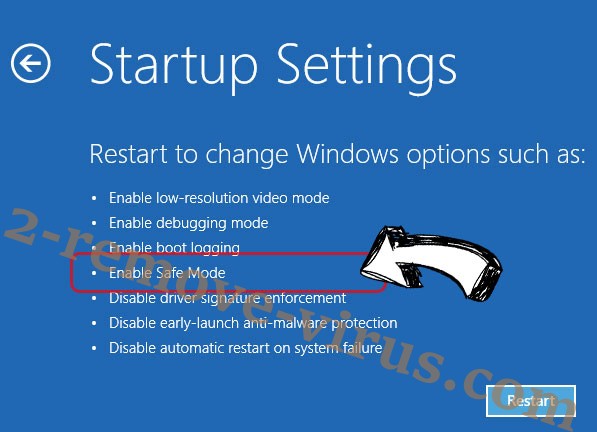
- Click Restart.
- Open your web browser and download the malware remover.
- Use the software to delete Cyberresearcher Virus
Step 2. Restore Your Files using System Restore
Delete Cyberresearcher Virus from Windows 7/Windows Vista/Windows XP
- Click Start and choose Shutdown.
- Select Restart and OK


- When your PC starts loading, press F8 repeatedly to open Advanced Boot Options
- Choose Command Prompt from the list.

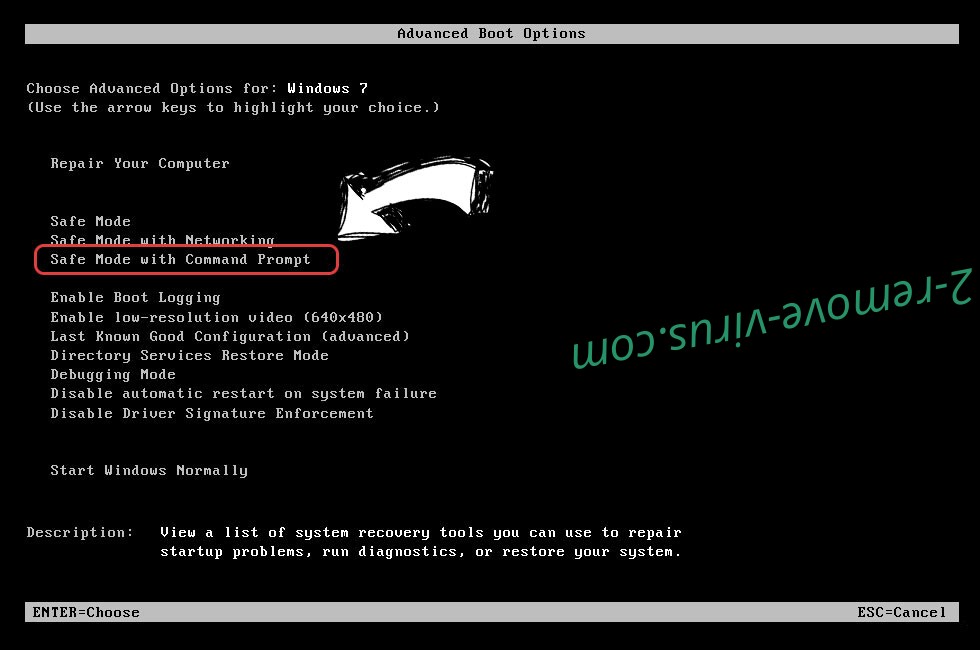
- Type in cd restore and tap Enter.

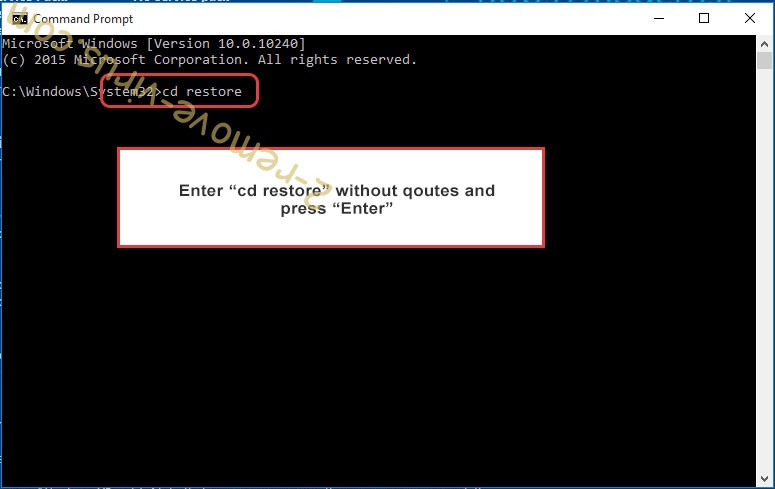
- Type in rstrui.exe and press Enter.

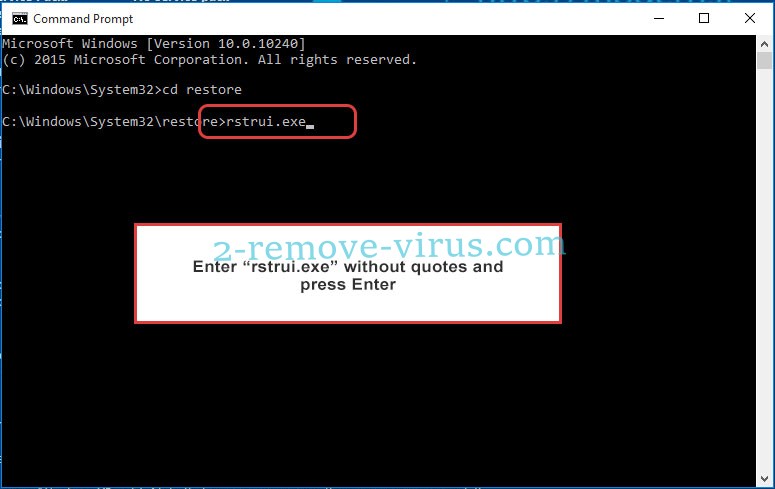
- Click Next in the new window and select the restore point prior to the infection.

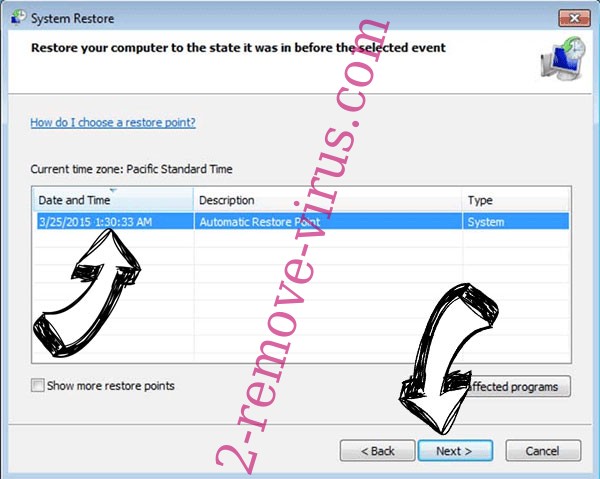
- Click Next again and click Yes to begin the system restore.

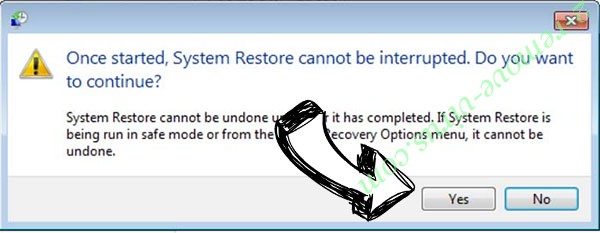
Delete Cyberresearcher Virus from Windows 8/Windows 10
- Click the Power button on the Windows login screen.
- Press and hold Shift and click Restart.


- Choose Troubleshoot and go to Advanced options.
- Select Command Prompt and click Restart.

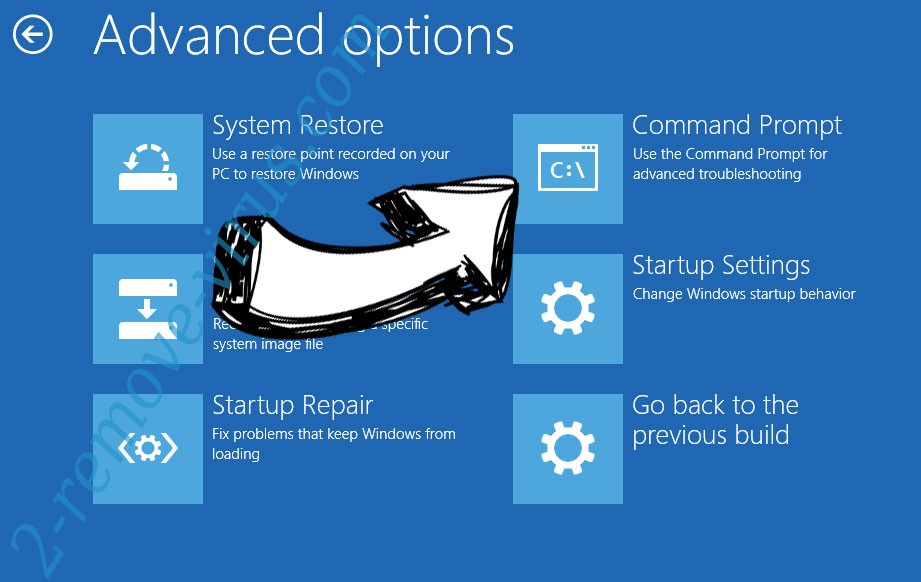
- In Command Prompt, input cd restore and tap Enter.


- Type in rstrui.exe and tap Enter again.


- Click Next in the new System Restore window.

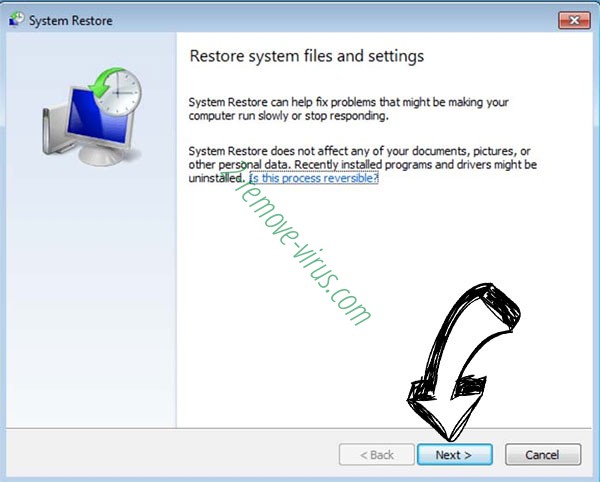
- Choose the restore point prior to the infection.


- Click Next and then click Yes to restore your system.


Site Disclaimer
2-remove-virus.com is not sponsored, owned, affiliated, or linked to malware developers or distributors that are referenced in this article. The article does not promote or endorse any type of malware. We aim at providing useful information that will help computer users to detect and eliminate the unwanted malicious programs from their computers. This can be done manually by following the instructions presented in the article or automatically by implementing the suggested anti-malware tools.
The article is only meant to be used for educational purposes. If you follow the instructions given in the article, you agree to be contracted by the disclaimer. We do not guarantee that the artcile will present you with a solution that removes the malign threats completely. Malware changes constantly, which is why, in some cases, it may be difficult to clean the computer fully by using only the manual removal instructions.
